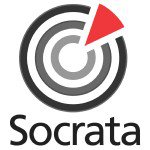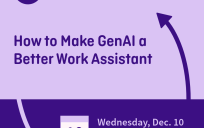Just as changes in private industry are driven by the customer experience, so are new developments in government agencies. In this case, however, the customer is the citizen. Through greater transparency, agencies have been able to demonstrate the value of their investments in order to better satisfy their citizens.
Although it may seem simple for state and local governments to release datasets to the public, turning these massive collections of data into a meaningful tool for collaboration between citizens and government is easier said than done. As part of the Government Innovators Virtual Tech Day, GovLoop hosted Ryan Mannion, Digital Government Adviser at Socrata, in an online training entitled “How to Use Data to Increase Citizen Engagement.”
As Mannion explained, “data is the most important resource that government has at its disposal.” Data gives employees a way to track and improve their initiatives, and it provides valuable context to the information. But interpretation methods haven’t always been effective.
In the past, agencies relied on data conversion approaches (such as the creation of PDF reports) that rendered the information static and out of date. In reality, this style was really open information, according to Mannion, and was not worth the effort. Today, open data programs center on accessibility and are driving communication between municipalities and locals. Mannion notes that, “if you are elevating the right data, you can get your point across.”
One example of data-driven storytelling is Austin, Indiana. In 2015, the city’s burgeoning opioid epidemic took a turn for the worst when more than 150 cases of HIV were identified — an outbreak tied almost solely to needle sharing. The challenge required a drastic solution, and in response the government began a needle exchange. Although controversial, government officials were able to justify their approach by citing the openly accessible data that demonstrated the link between drug use and the breakout.
Open data can also play a central role in helping governments satisfy what Mannion views as their ultimate responsibility: improving citizens’ access to facilities. A favorite example at Socrata is Seattle’s Hack the Commute project. After publishing traffic data, Seattle invited its tech savvy citizens to submit their ideas. The winners of the competition created a map featuring the grade of streets and the location of construction spots to improve accessibility for citizens with extra mobility needs.
The greatest barrier to entry for most municipalities is a lack of commitment. When governments seek an open data plan to check off a box, they often lack the momentum to avoid stalling at one of the many different levels of approval. For counties and cities that are seriously interested in open data initiatives, Mannion recommends starting small. Implementing open data practices internally is a great way to test out the system, learn how to curate data, and show relevant stakeholders how valuable the technology can be. This process is not just limited to big, wealthy cities. Mannion noted that some of the greatest open data successes are small, such as the Barnstable, Massachusetts.
The rise of open data projects has changed the landscape. Socrata already partners with many large cities on open data projects, and Mannion projects that smaller communities will soon follow suit. This expansion has also changed the conversation about open data. Mannion has found that more and more cities have received the necessary education on open data through communication and collaboration with their neighbors. They come in ready to develop their strategic objectives and put their open data initiatives into action. This change is sure to be a positive one because as Mannion explains, “open data allows you to be in the here and now for your citizens.”
For more examples of the power of open data, check these out:
- View the White House’s 2017 budget online here.
- Take a look at Kansas City’s open data program.
- Seattle’s Hack the Commute Winner (AccessMap) mentioned in the presentation can be viewed here.






Leave a Reply
You must be logged in to post a comment.